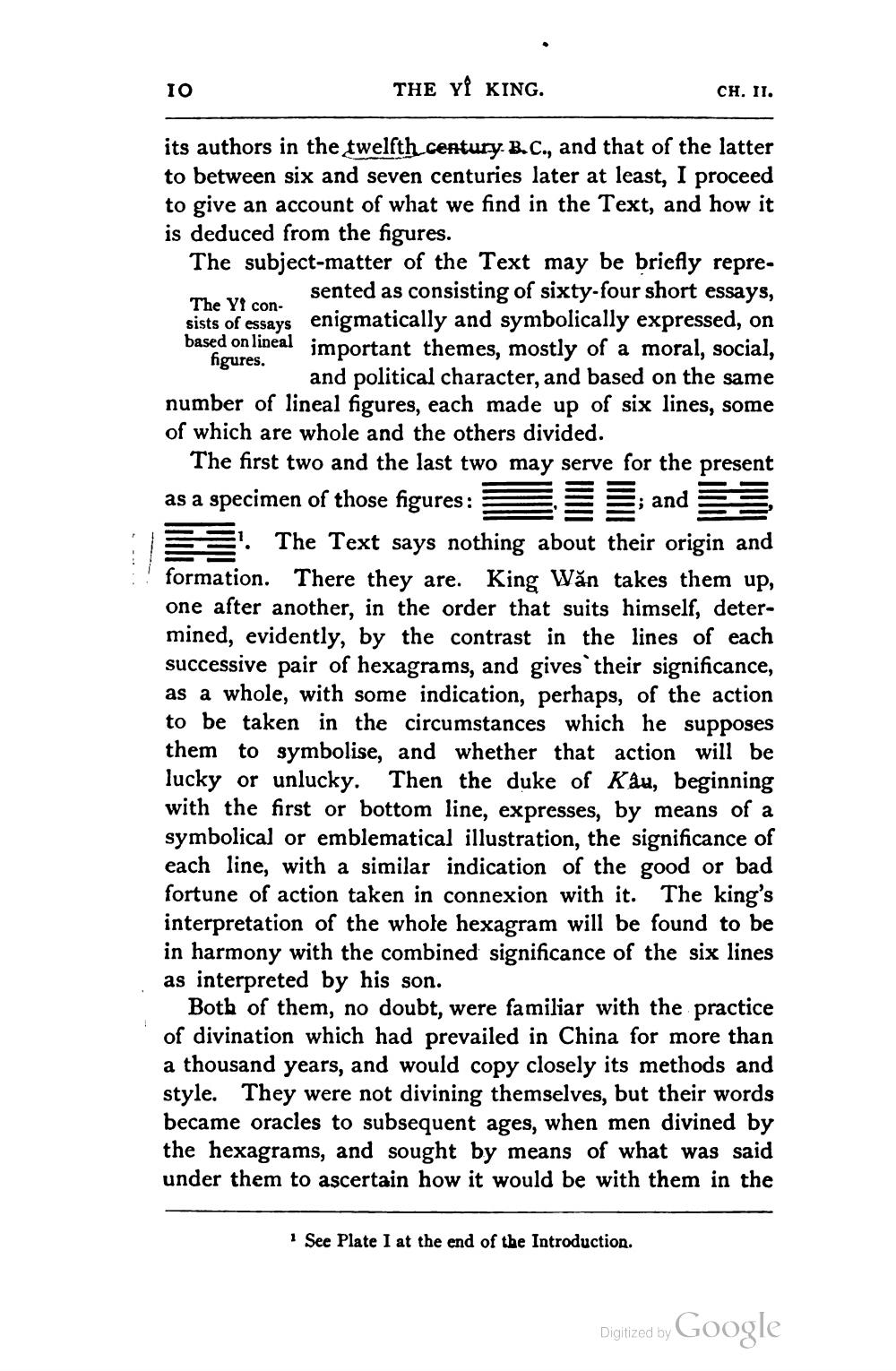________________
1ο
THE YÎ KING
CH. II.
its authors in the twelfth century. B.C., and that of the latter to between six and seven centuries later at least, I proceed to give an account of what we find in the Text, and how it is deduced from the figures. The subject-matter of the Text may be briefly repre
sented as consisting of sixty-four short essays, The Yt consists of essays enigmatically and symbolically expressed, on based on lineal important themes, mostly of a moral, social, figures.
and political character, and based on the same number of lineal figures, each made up of six lines, some of which are whole and the others divided.
The first two and the last two may serve for the present as a specimen of those figures:
; and SS! The Text says nothing about their origin and formation. There they are. King Wăn takes them up, one after another, in the order that suits himself, determined, evidently, by the contrast in the lines of each successive pair of hexagrams, and gives their significance, as a whole, with some indication, perhaps, of the action to be taken in the circumstances which he supposes them to symbolise, and whether that action will be lucky or unlucky. Then the duke of Kau, beginning with the first or bottom line, expresses, by means of a symbolical or emblematical illustration, the significance of each line, with a similar indication of the good or bad fortune of action taken in connexion with it. The king's interpretation of the whole hexagram will be found to be in harmony with the combined significance of the six lines as interpreted by his son.
Both of them, no doubt, were familiar with the practice of divination which had prevailed in China for more than a thousand years, and would copy closely its methods and style. They were not divining themselves, but their words became oracles to subsequent ages, when men divined by the hexagrams, and sought by means of what was said under them to ascertain how it would be with them in the
See Plate I at the end of the Introduction.
Digitized by Google




